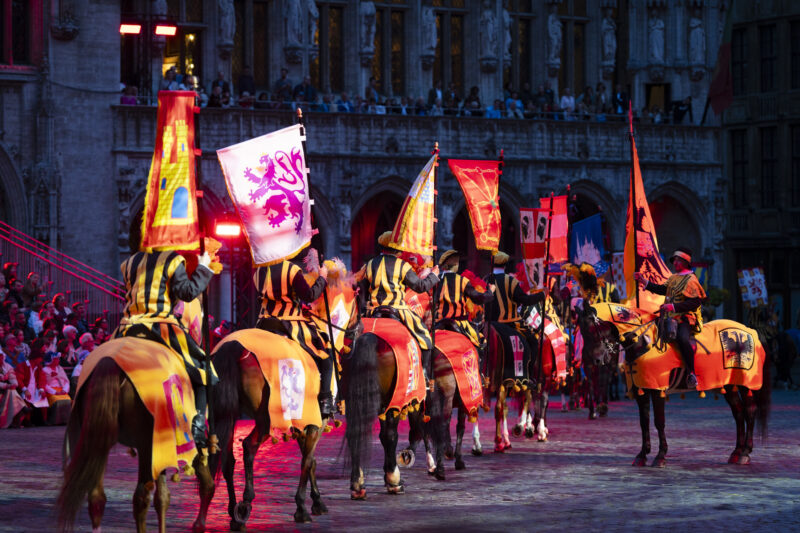The Brussels Ommegang
Brussels was once again in the spotlight this summer with the annual Ommegang. It was a spectacular event with over 1,400 costumed actors bringing a key part of Brussels' history to life on the city streets. The central theme and historical backdrop is the statue of Our Lady of Sablon and the arrival of Emperor Charlemagne in Brussels on June 2, 1549. The Ommegang is first and foremost a festival for the people of Brussels. It's also a tribute to the city's history, which UNESCO has included on its list of intangible cultural heritage of humanity.
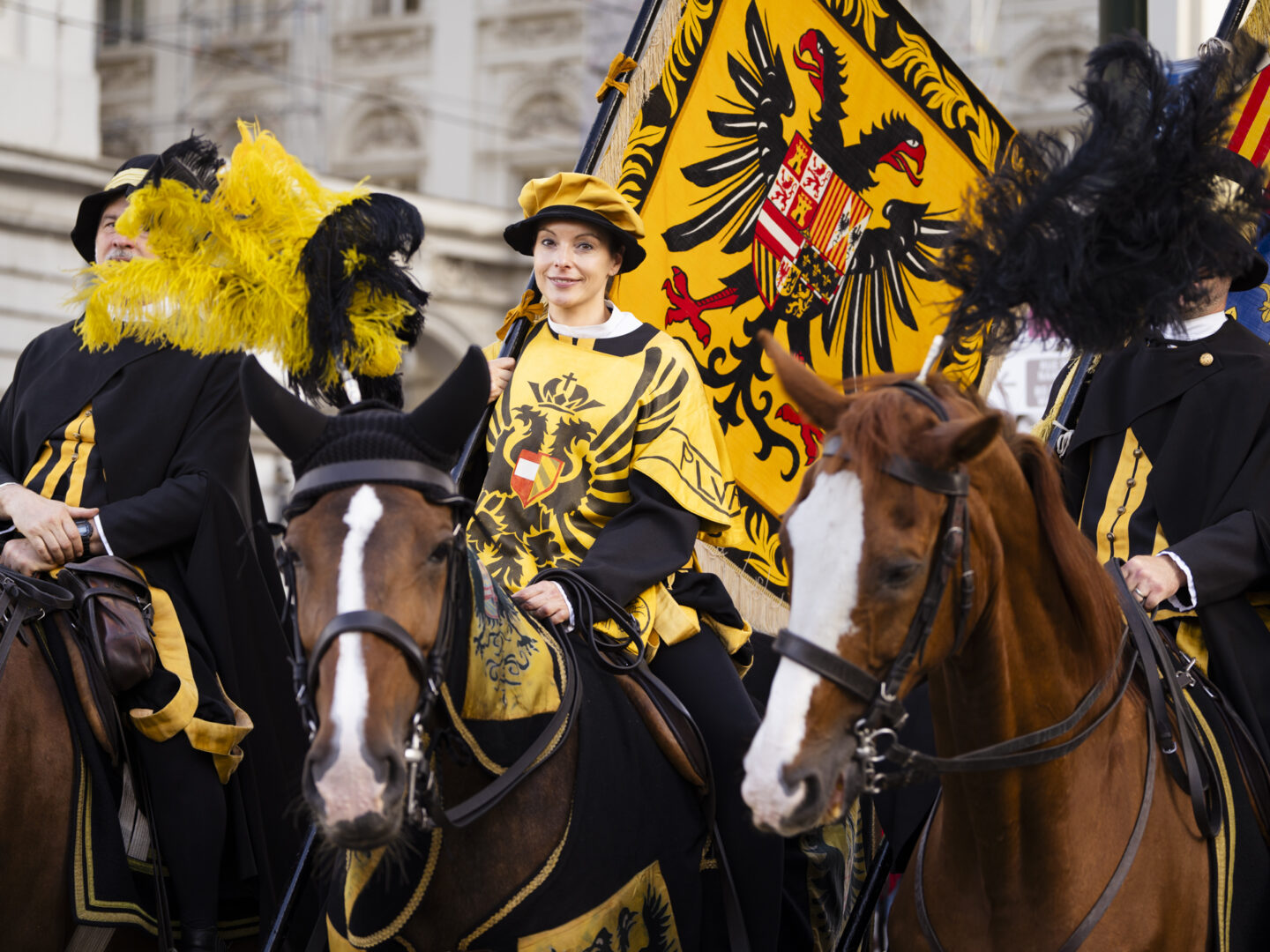
The legend of Beatrijs Soetkens, a very pious woman
In 1348, the pious Beatrice Soetkens receives a vision in which the Virgin Mary instructs her to bring the miraculous statue of Our Lady at 't Stocxken to Brussels. The only problem is that the statue is in the cathedral of the city of Antwerp. Beatrice is determined and sets off by boat on her God-inspired mission to Antwerp. She succeeds in her goal, but the return journey is fraught with difficulty.
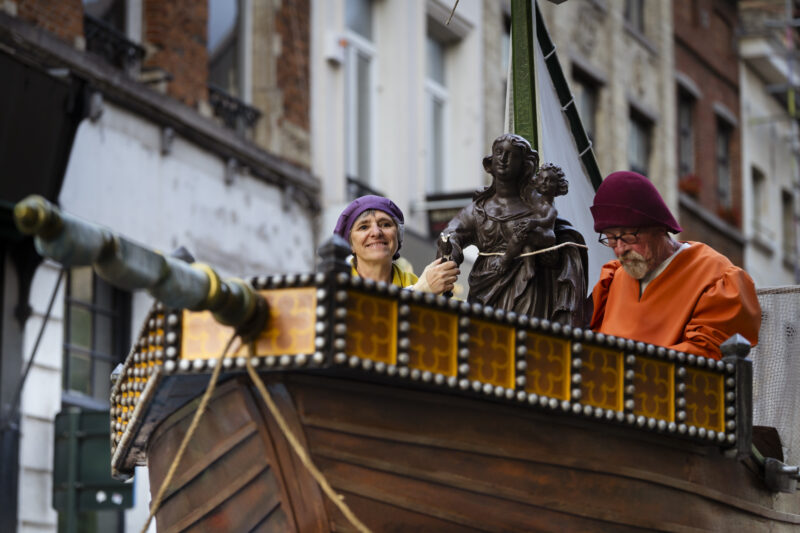
Thanks to some divine intervention, Beatrice arrives safely with her boat and the holy statue at the training grounds of the Brussels crossbowmen, right outside the city walls. She tells her story to the city's notable figures, and the statue of Mary is solemnly set up in the adjoining chapel of the grounds that are now the Sablon.
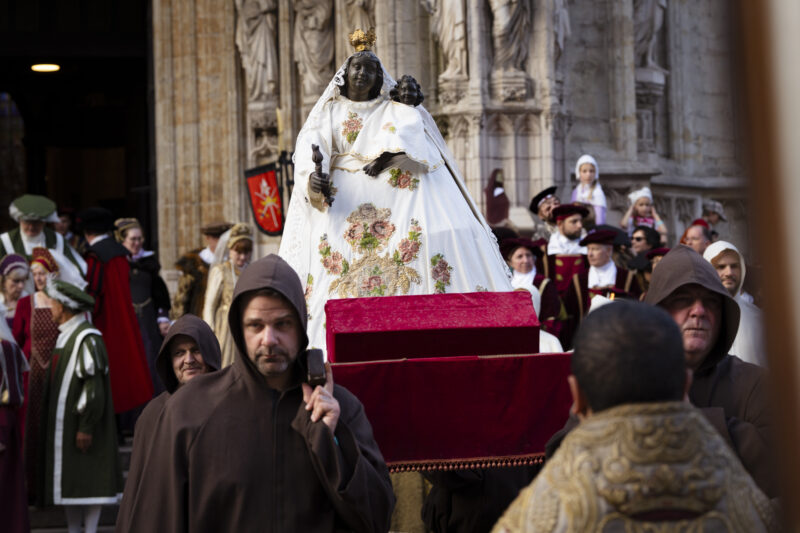
Our Lady of Sablon becomes the patroness of the crossbow guild, and an annual procession, also called ommegang, is organized. In this ceremony, the image of the Virgin Mary is carried around the church in a procession of crossbowmen, religious figures, and dignitaries.
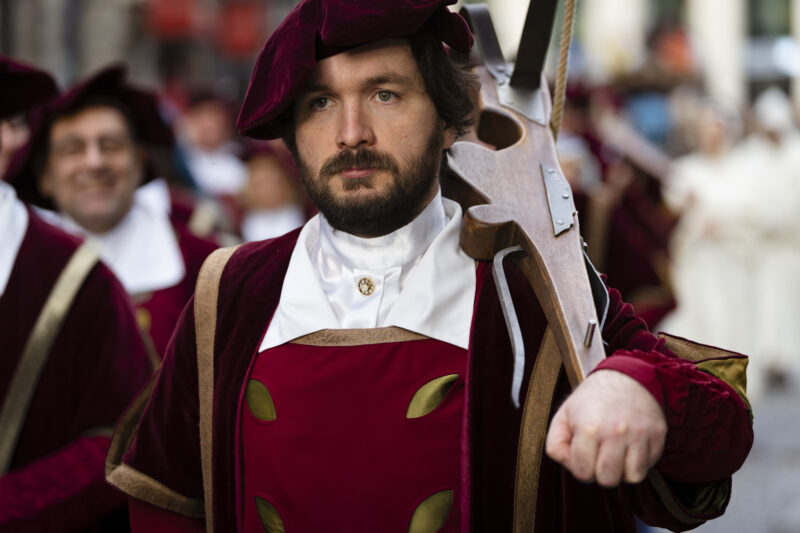
The arrival of Charles V
Let's fast forward 200 years. On June 2, 1549, Charles V made his grand entrance into Brussels to present his son, the future King Philip II. The city's mayor decided to welcome the emperor with the annual procession in honor of Our Lady of Sablon and show him the special statue of Mary.
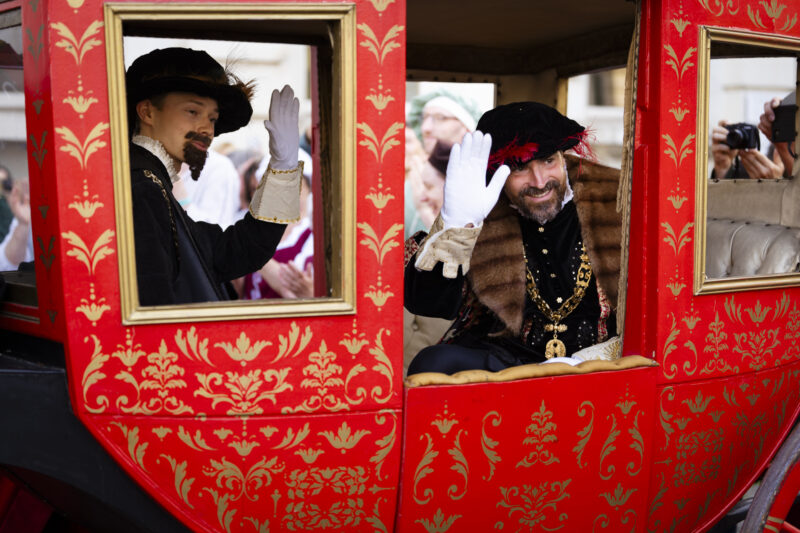
The modern version of the Ommegang
Over time, the annual Ommegang fell into decline, and by the 18th century, only two processions were held.
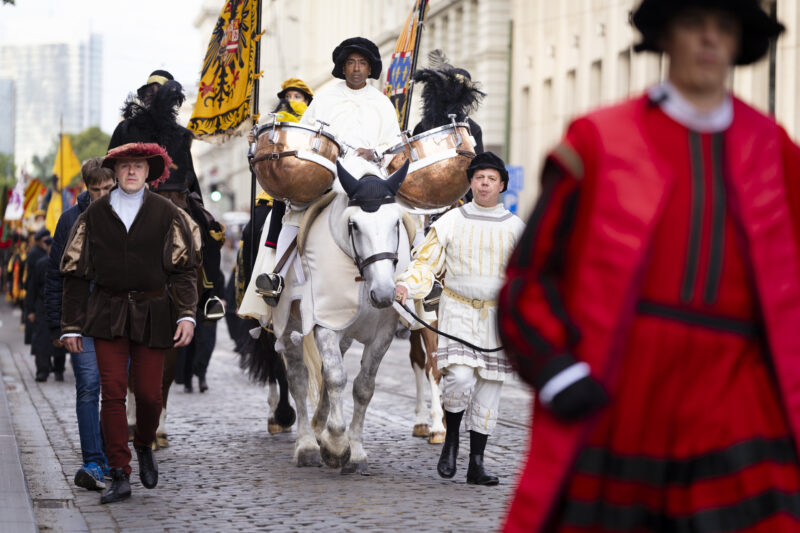
It wasn't until 1930 that people started to take a new interest in the rich history and folklore surrounding the Ommegang. The procession was put together again in a new version that combined the legend of Beatrice Soetkens and the entry of Charles V.
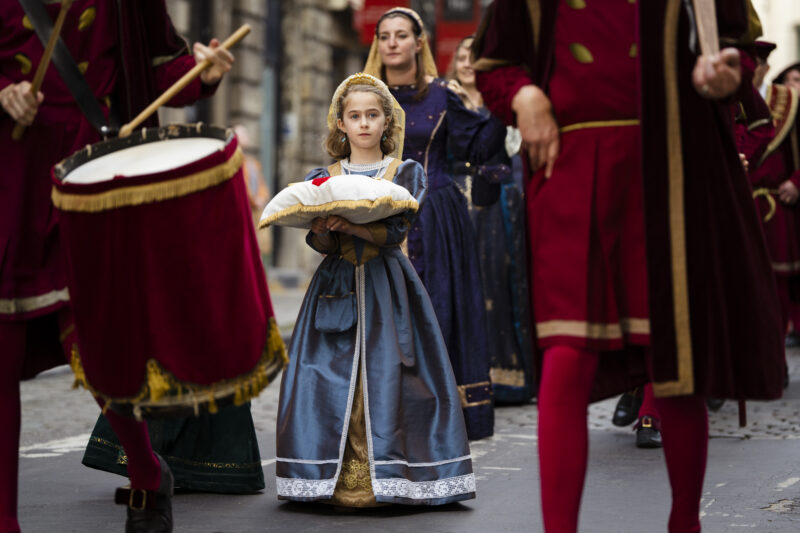
The annual Ommegang is now a huge, popular celebration with more than 1,400 actors reviving the procession in honor of Charles V in 1549. The spectacle attracts thousands of spectators, not only from Brussels and Belgium itself but from all over the world.
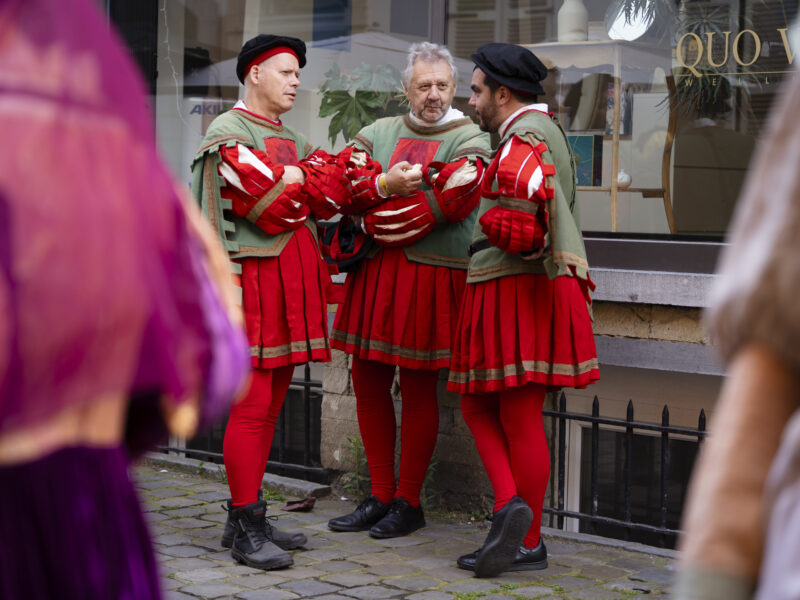
The feast kicks off at the Place du Sablon with jousting and contests between knights and crossbowmen.
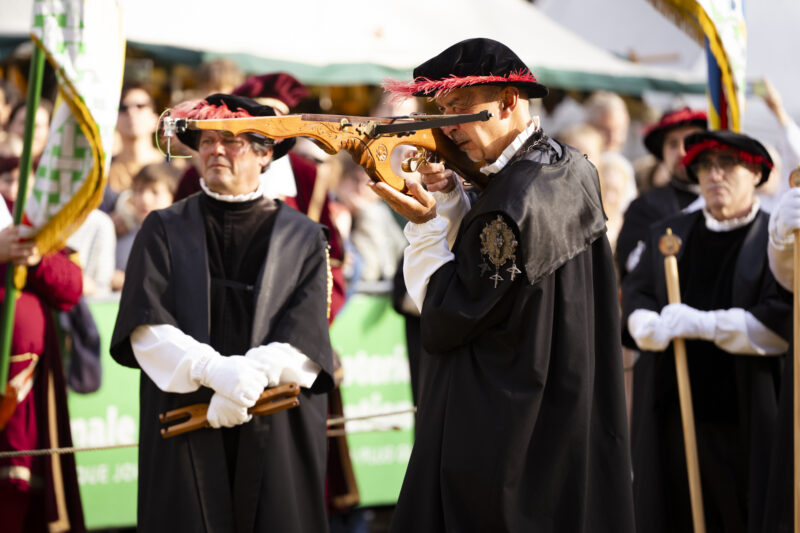
Then, the carriage with Charles V and his son arrives, accompanied by his retinue on horseback. He's greeted by the religious leaders of the church at the Place du Sablon.
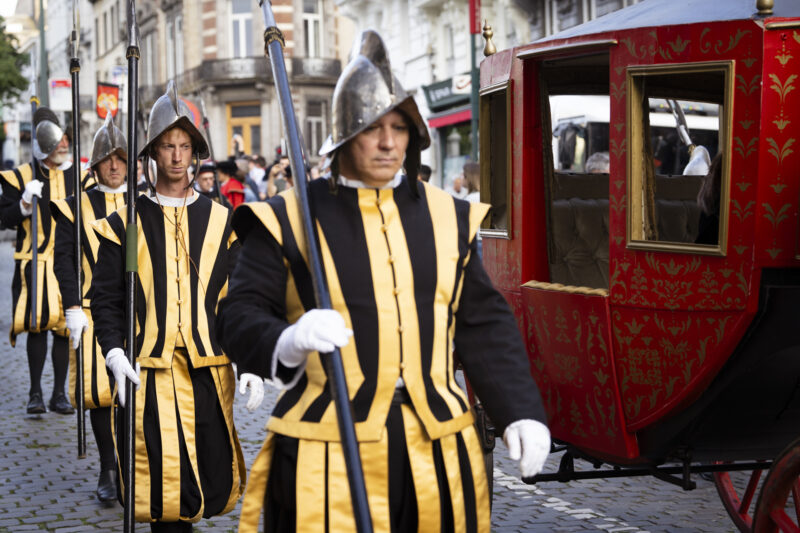
From there, the procession begins with the statue of Mary being carried around the church while the Emperor rides through the streets of Brussels to the Grand Place.
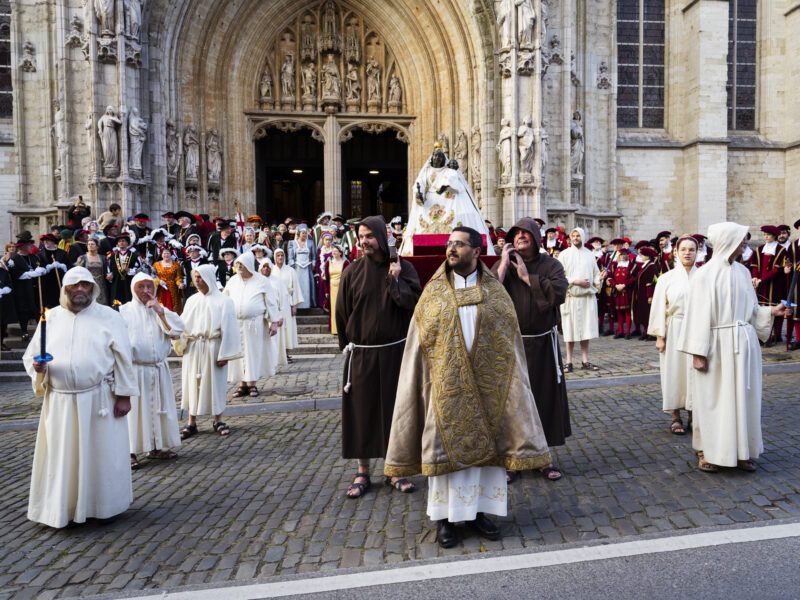
He's followed by a procession of knights and standard-bearers on horseback, archers, guilds, dignitaries, and the common people.
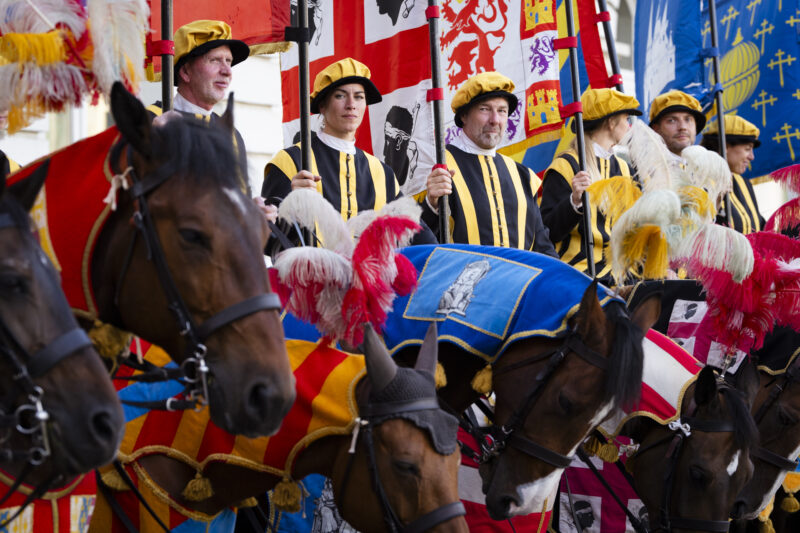
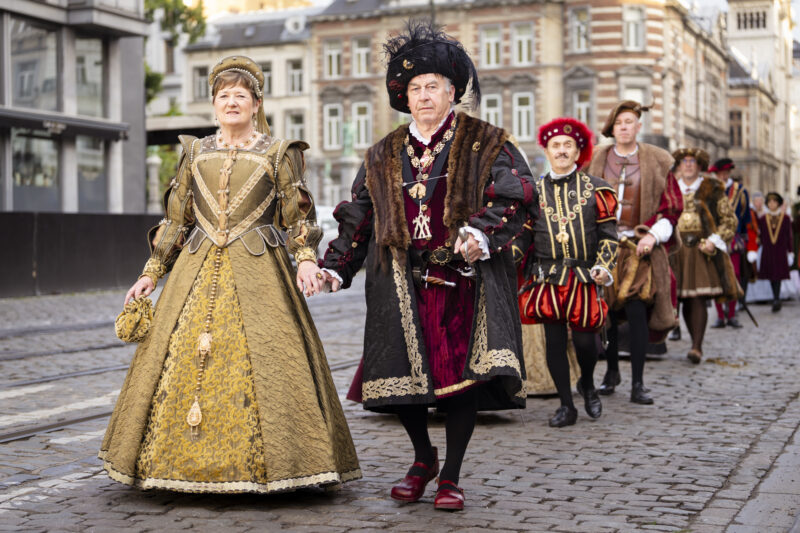
On the Grand Place, there's a spectacular show with flag-raisers, giants, stilt-walkers, horseback parades, and dancing.
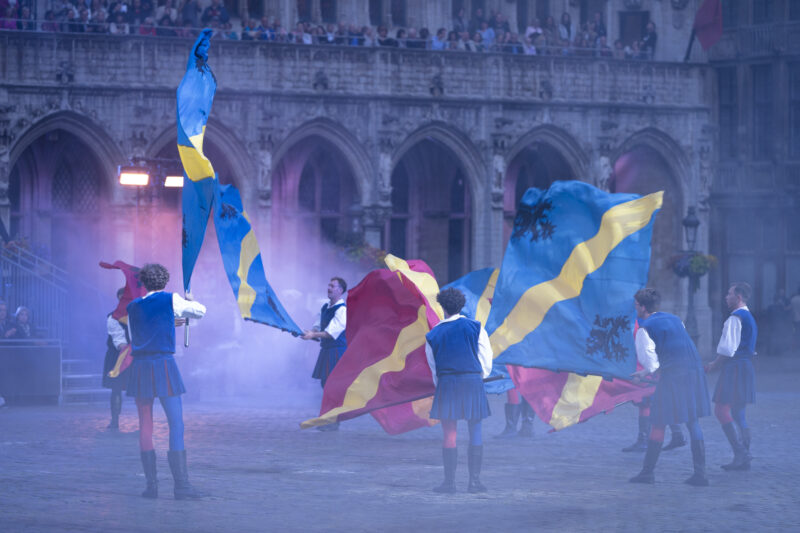
The evening ends with a popular feast in the streets around the city’s main square.
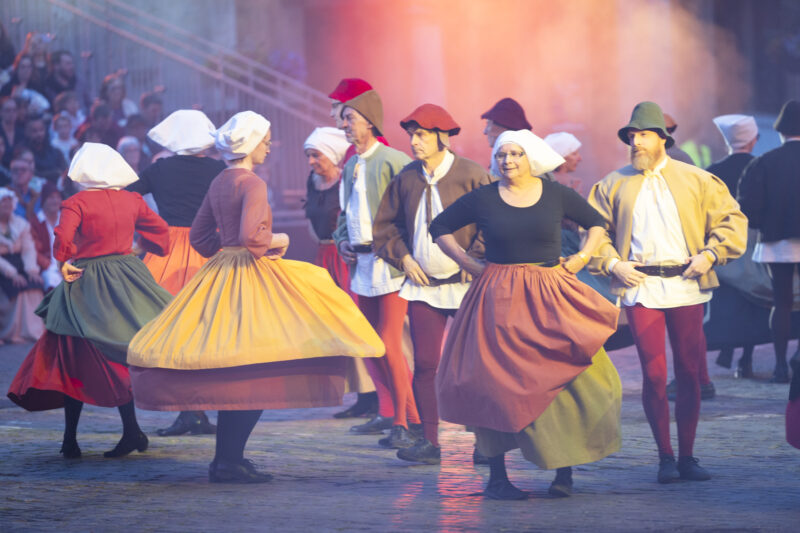
Did you miss out on the Ommegang this year? No worries! The Ommegang takes place annually on two evenings in July in the historic center of Brussels.
